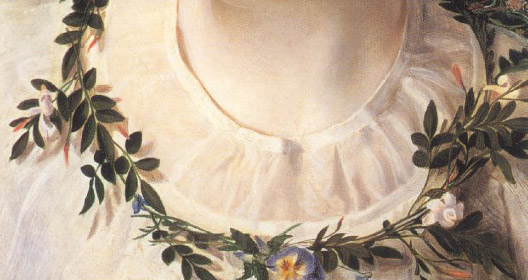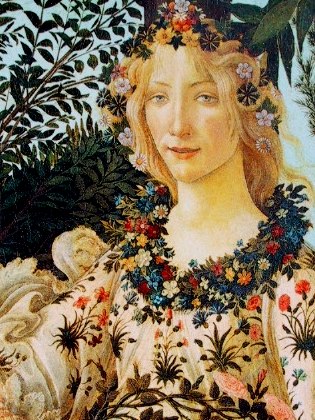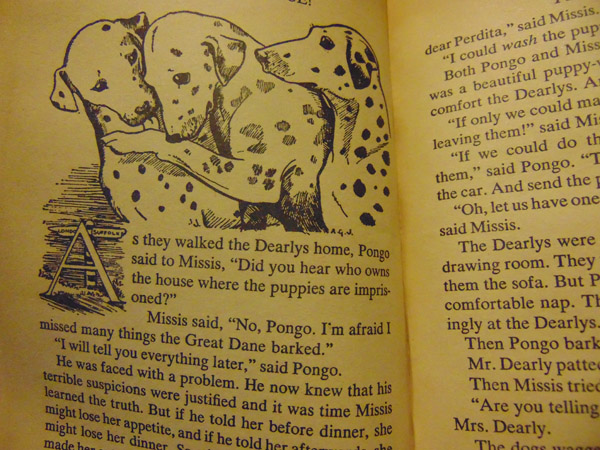Perdita (seen above) was painted by Frederick Sandys with Mary Emma Jones as the model. Also known by her stage name Miss Clive, Mary Emma Jones appears in several of Sandys’ works. They never married, but the couple did have ten children together. Sandys was a bit of a rogue when it came to his love life. In addition to Jones, he had a lengthy affair with Keomi Gray (also see More on Keomi Gray) and she appears in many of his works.
Sandys’ Perdita has definite Rossettian influences to my eye, which is hardly surprising as he shared Dante Gabriel Rossetti’s studio for a while and at one point, Rossetti even accused Sandys quite blatantly of plagiarism. Of course, there’s also a nod to Botticelli.


In Shakespeare’s The Winter’s Tale, Perdita is the daughter of Leontes (King of Sicilia) and Hermione. Unfortunately, Leontes wrongly believes that Hermione has been unfaithful with Polixenes (King of Bohemia) and that they have conceived a child. He imprisons his wife and Perdita, who actually is his daughter, is born in captivity. She is later abandoned on a seashore where she is discovered and raised by a shepherd.
In the second half of the play, Perdita has grown into a sixteen-year-old beauty. She has fallen in love with Florizel, son of Polixenes. Polixenes strongly objects to this relationship, not realizing that Perdita isn’t actually a shepherd’s daughter but the daughter of Hermione and Leontes. Eventually, as in all Shakespearean identity conundrums, Perdita learns who she truly is and is reunited with Hermione. This is a rudimentary overview on my part and I am not doing The Winter’s Tale justice.
In 2013, The Royal Shakespeare Company performed a production of the play starring Tara Fitzgerald, Jo Stone-Fewings and Adam Levy.
I was happily surprised to find this video with the cast where, around the 1:27 minute mark, Tara Fitgerald mentions in passing that in this production they’ve set the play in the 1860s and describes the characters as free-spirited and Pre-Raphaelite.
 Perhaps you are more familiar with this Perdita?
Perhaps you are more familiar with this Perdita?
If you’ve never read the book, you might be unaware that Pongo’s wife was actually named Missis. Perdita is a different Dalmatian and her name was a deliberate choice by the author Dodie Smith.

I adored the Disney cartoon as a child and have happy memories of repeatedly listening to a recorded version on vinyl (a record I still have, by the way).
When I finally read Dodie Smith’s book at age eleven I was enthralled and I have revisited that story several times over the years. Although I still love the cartoon, it is missing some of the nuance and charm of Smith’s story.
Perdita is a liver-spotted dalmatian, lost from home and missing the pups that were taken from her. The Dearly family rescue her; Pongo and Missis take her into their hearts. Despite the fact that she is weak and underfed, she helps wash Pongo and Missis’ pups and bonds with them while missing her own. Both the cartoon and later live action versions combine Missis and Perdita into one character and I suspect Disney might have found the alliteration of ‘Pongo and Perdita’ to be catchier than Pongo and Missis.

“We’ll call her Perdita,” said Mrs. Dearly, and explained to the Nannies that this was after a character in Shakespeare. “She was lost. And the Latin word for lost was perditus.” Then she patted Pongo, who was looking particularly intelligent, and said anyone would think he understood. And indeed he did. For though he had very little Latin beyond ‘Cave canum’, he had, as a young dog, devoured Shakespeare (in a tasty leather binding). —One Hundred and One Dalmatians, Dodie Smith


Thanks for another fascinating post! The Sandys painting is beautiful. Very interesting link to 101 Dalmatians. I too have always loved the film, fascinating to hear about where the name from